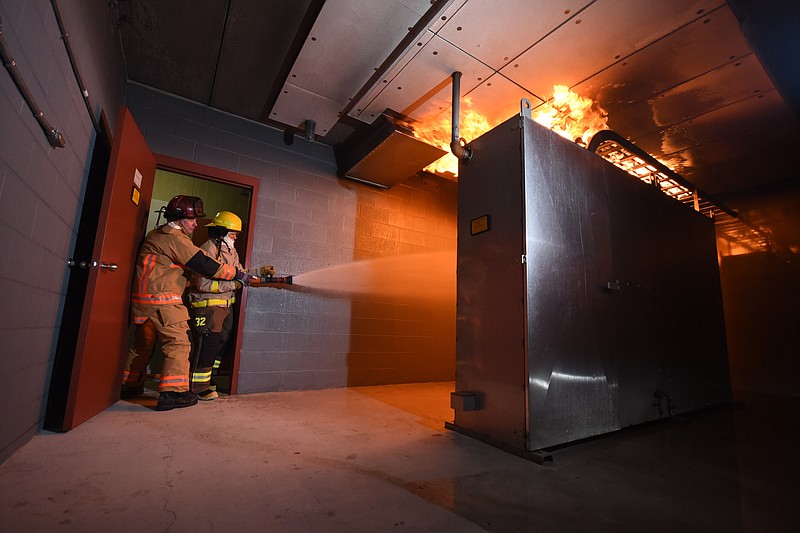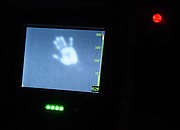This is the only facility in the United States where you come through our training, and when you leave at the end of the week, youve applied water to 6,900 volts of electrical equipment.
JASPER, Tenn. - Tennessee Valley Authority employees don't wait on the local fire department to arrive when flames break out in one of the agency's power-generating facilities across the South.
They turn to a group of colleagues on their shift, trusting the niche expertise their peers are developing at a gated compound situated in rural Marion County.
A new $2.2 million burn simulator building at TVA's Emergency Response Training Center south of Jasper is providing the agency's employees all the knowledge and first-hand experience they need to protect lives, equipment and utility bills in case of an emergency.
"Our entire old building would fit inside this one room," facility manager Phil Johnson said Tuesday while standing in one of the many chambers inside the 5,000-square-foot building. "This is something we're proud of."
TVA fires are not common, and local fire departments do respond to offer support to TVA firefighters. But the combination of fire and electricity at a power plant calls for specialized techniques that differ from the protocols of traditional firefighting.
Johnson and many of the training center's employees were once traditional firefighters taught not to put water on electricity. Now they make their living teaching a form of firefighting that requires exactly that.
Groups of 20 to 30 regular TVA employees from near and far cycle through the training center for a week each year, suiting up in full firefighting gear to encounter real flames in a series of rooms set up to mimic the conditions they could see inside a burning power plant.
"This is the only facility in the United States where you come through our training, and when you leave at the end of the week, you've applied water to 6,900 volts of electrical equipment," Johnson said.
The new building features a drab, concrete exterior. It's the inside that makes it unique.
"Pretty doesn't last well in a fire environment," Johnson said.
One room is set up as a cable spreading room, another like a 480-volt electrical board room. A third is configured like a traditional office. An instructor, with the flip of a switch, can start a fire in each room.
Ceiling temperatures can reach 1,500-2,000 degrees in one room as fire spreads across the top of the room. But the smoke is artificial, and everything can be stopped by flipping the same switch. Then there is an advanced ventilation system that helps usher the heat out out of the building.
"We were like kids at Christmas," top-level instructor Steve James said of the day the team moved into the new burn simulator building, adding that there is no comparison between the new facility and the 34-year-old building it replaced.
Though its exterior may not be flashy, the building, which is five stories at its tallest point, allows TVA crews to practice ladder and confined space rescues.
James was part of a team that rescued an electrician from 300 feet up a power plant stack at Widows Creek in Alabama just over 10 years ago.
He and the team of eight to 10 instructors at the training facility will head to major TVA fires or emergencies, like the Widows Creek rescue, if the fire and emergency-trained employees there need assistance.
The biggest difference between regular firefighting and TVA firefighting, James said, is that TVA does not have the luxury of having the power turned off before they begin spraying water on the blaze.
"One mistake," he said, "and you're not coming home," he said.
TVA's firefighting tactics of strategically putting water on active electrical current stemmed from a 1975 cable trey fire at the Browns Ferry Nuclear Plant in Alabama.
Johnson said the primary lesson learned from that fire was that TVA employees needed to be equipped to fight fire themselves. The new facility indicates that lesson has not been forgotten.
"Here, it's great," he said, "because if you need to make a teaching moment out of it, you can just turn the fire off."
Contact staff writer David Cobb at dcobb@timesfreepress.com or 423-757-6249.

